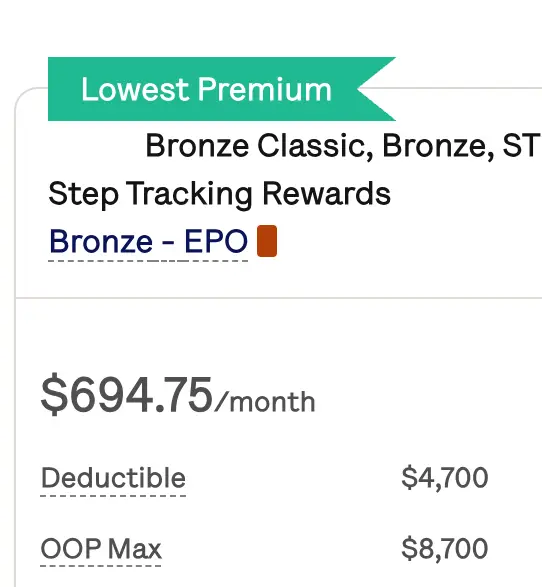How Much Should I Spend on Health Insurance in 2024?
A good rule of thumb for how much you spend on health insurance is 10% of your annual income. However, there are many factors to consider when deciding how much to spend on health insurance, including your income, age, health status, and eligibility restrictions. In 2022, the average national cost for health insurance was $7,911 for single coverage and $22,463 for family coverage per year. .
Determining How Much You Should Spend on Health Insurance
The amount you should spend on health insurance depends on a few different characteristics of health insurance plans: the deductible, premium, and cost-sharing mechanisms. Generally, plans with higher monthly premiums have lower deductibles and less cost-sharing. There are four tiers of health insurance plans available on the Marketplace:
Health Insurance Costs by Tier of Plan
| Plan Tier | 2022 Monthly Premium | Percentage of Costs Covered by the Plan |
|---|---|---|
| Catastrophic | $352/month | 50% |
| Bronze | $421/month | 60% |
| Silver | $583/month | 70% |
| Gold | $640/month | 80% |
| Platinum | $767/month | 90% |
Healthcare Usage
John Bartleson, the owner of Health Benefits, helps answer this question. He explains, "The amount you should spend on health insurance depends on usage. To determine how much you should spend on health insurance, you need to consider how you've used your insurance over the past 18 months. Asking yourself how many times you need to see a physician or what kind of procedure you may need will help focus your search.
For example, you may know you need to see your doctor throughout the year and plan for a near-term procedure. In this scenario, it's best to get a plan with lower max out-of-pocket costs, even though the monthly premiums are more expensive. Likewise, if you are relatively healthy and you don't have any ongoing medical conditions, it's probably best to get a plan that has a low monthly premium but higher out-of-pocket costs."
How much you should spend on health insurance is subjective. It depends on how much you value health, your health status, age, income, and eligibility restrictions. John Millen from MillenGroup suggests, “A good rule of thumb is that you should spend about 10% of your annual income on the cost of single coverage (annual). This is actually the threshold that was established when the affordable care act started in 2008.""
How Much Millenials Should Spend on Health Insurance
If you don’t seek frequent health services, you may only need to be covered by health insurance in case of emergency. The amount you should spend on health insurance depends on the type of coverage you want.
Below we outline two options to get health insurance for millennials.
Catastrophic Health Insurance
Catastrophic health insurance is a good option for millennials because they have inexpensive premiums and limited healthcare coverage. If you are under 30 years old, you can find these plans on the Marketplace and expect to pay $173 per month on average to be protected in case of emergency.
However, it is important to note that these plans have very high deductibles, meaning that they will not cover any healthcare expenses until you spend approximately $8,000. Therefore, if you have not met your deductible, you will be responsible for covering the full cost of health care expenses.
Health Insurance Alternatives
Instead of purchasing an annual health insurance plan, many millennials have been joining care membership plans like Mira. These plans offer discounted health services when you need them, without a deductible.
In addition, many millennials choose to use Mira in addition to a catastrophic health plan. Coupling Mira and a catastrophic plan ensure that you get access to low-cost preventative and urgent care even before meeting your deductible on your catastrophic plan.

Get affordable doctor copay without paying insurance premiums
Join 39,000 people and get Mira, the best alternative to traditional insurance. Enroll and use immediately. Plans start at only $45/mo.
Alexis Bryan MPH, is a recent graduate of Columbia’s Mailman School of Public Health. She is passionate about increasing access to care to improve health outcomes. Outside of work, she loves to travel, read, and pay too much attention to her plants.
